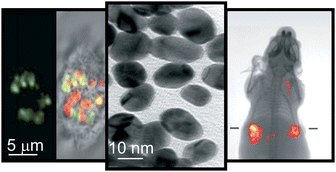During the past 20 years, improvements in nanoscale materials synthesis and characterization have given scientists great control over the fabrication of materials with features between 1 and 100 nm, unlocking many unique size-dependent properties and, thus, promising many new and/or improved technologies. Recent years have found the integration of such materials into commercial goods; a current estimate suggests there are over 800 nanoparticle-containing consumer products (The Project on Emerging Nanotechnologies Consumer Products Inventory, http://www.nanotechproject.org/inventories/consumer/, accessed Oct. 2008), accounting for 147 billion USD in products in 2007 (Nanomaterials state of the market Q3 2008: stealth success, broad impact, Lux Research Inc., New York, NY, 2008). Despite this increase in the prevalence of engineered nanomaterials, there is little known about their potential impacts on environmental health and safety. The field of nanotoxicology has formed in response to this lack of information and resulted in a flurry of research studies. Nanotoxicology relies on many analytical methods for the characterization of nanomaterials as well as their impacts on in vitro and in vivo function. This review provides a critical overview of these techniques from the perspective of an analytical chemist, and is intended to be used as a reference for scientists interested in conducting nanotoxicological research as well as those interested in nanotoxicological assay development.

You have access to this article
 Please wait while we load your content...
Something went wrong. Try again?
Please wait while we load your content...
Something went wrong. Try again?


 Please wait while we load your content...
Please wait while we load your content...